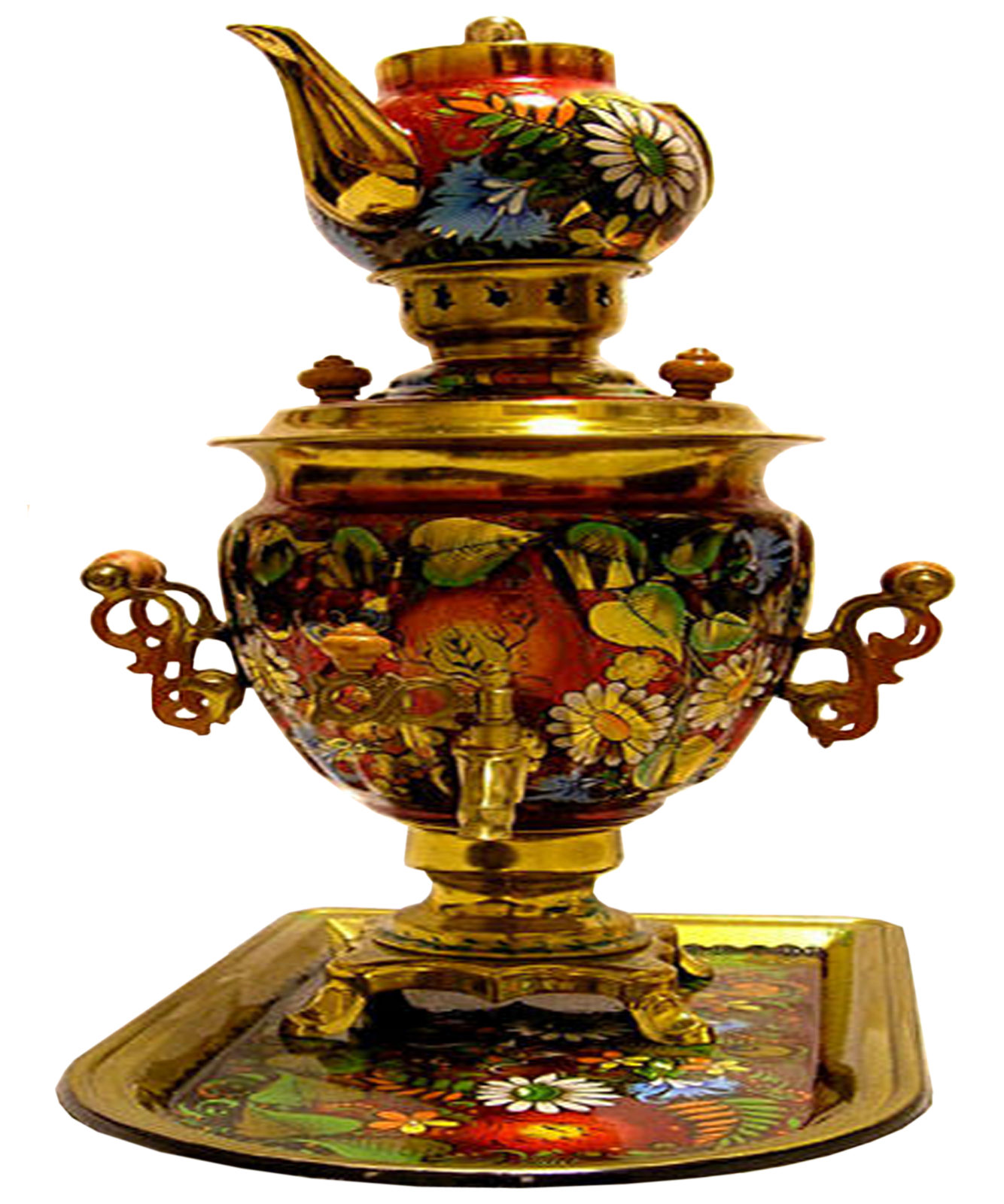
This image has format transparent PNG with resolution 1334x1600.
You can download this image in best resolution from this page and use it for design and web design.
Samovar PNG with transparent background you can download for free, just click on download button.
A samovar (Russian: самовар, IPA: [s?m??var] (About this soundlisten); literally "self-brewer") is a heated metal container traditionally used to heat and boil water in Russia. Additionally, the samovar is well known outside of Russia and spread through the Russian culture to Eastern Europe, South-Eastern Europe, Iran, Afghanistan, Kashmir, India, the Middle East, Vietnam, and is meanwhile also known in some parts of Central Europe. Since the heated water is typically used to make tea, many samovars have a ring-shaped attachment (Russian: конфорка, konforka) around the chimney to hold and heat a teapot filled with tea concentrate. Though traditionally heated with coal or charcoal, many newer samovars use electricity to heat water in a manner similar to an electric water boiler. Antique samovars are often prized for their beautiful workmanship.
Samovars are typically crafted out of plain iron, copper, polished brass, bronze, silver, gold, tin, or nickel. A typical samovar consists of a body, base and chimney, cover and steam vent, handles, tap and key, crown and ring, chimney extension and cap, drip-bowl, and teapot. The body shape can be an urn, krater, barrel, cylinder, or sphere. Sizes and designs vary, from large, "40-pail" ones holding 4 litres (1.1 US gal) to those of a modest 1 litre (0.26 US gal) size.
A traditional samovar consists of a large metal container with a tap near the bottom and a metal pipe running vertically through the middle. The pipe is filled with solid fuel which is ignited to heat the water in the surrounding container. A small (6 to 8 inch) smoke-stack is put on the top to ensure draft. After the water boils and the fire is extinguished, the smoke-stack can be removed and a teapot placed on top to be heated by the rising hot air. The teapot is used to brew a strong concentrate of tea known as заварка (zavarka). The tea is served by diluting this concentrate with кипяток (kipyatok) (boiled water) from the main container, usually at a water-to-tea ratio of 10-to-1, although tastes vary.
The invention and cultural development of samovar in Russia was probably influenced by Byzantine and Asian cultures. Conversely, Russian culture also influenced Asian, Western Europe and Byzantine cultures. Cultural connections exist to a similar Greek water-heater of classical antiquity, the autepsa, a vase with a central tube for coal. The first historically recorded samovar-makers were the Russian Lisitsyn brothers, Ivan Fyodorovich and Nazar Fyodorovich. From their childhood they were engaged in metalworking at the brass factory of their father, Fyodor Ivanovich Lisitsyn. In 1778 they made a samovar, and the same year Nazar Lisitsyn registered the first samovar-making factory in Russia. They may not have been the inventors of the samovar, but they were the first documented samovar-makers, and their various and beautiful samovar designs became very influential throughout the later history of samovar-making. These and other early producers lived in Tula, a city known for its metalworkers and arms-makers. Since the 18th century Tula has been also the main center of Russian samovar production, with tul'sky samovar being the brand mark of the city. A Russian saying equivalent to "carrying coal to Newcastle" is "to travel to Tula with one's own samovar". Although Central Russia and Ural region were among the first Samovar producers, over time several samovar producers emerged all over Russia, which gave the somovar its different local characteristics. By the 19th century samovars were already a common feature of Russian tea culture. They were produced in large numbers and exported to Central Asia and other regions. The samovar was an important attribute of Russian households and taverns to tea-drinking. It was used by all classes, from the poorest peasants up to the most well-suited people. The Russian expression "to have a sit by the samovar" means to have a leisurely talk while drinking tea from a samovar. In everyday use samovars were an economical permanent source of hot water in older times. Various slow-burning items could be used for fuel, such as charcoal or dry pinecones. When not in use, the fire in the samovar pipe faintly smouldered. As needed it could be quickly rekindled with the help of bellows. Although a Russian jackboot сапог (sapog) could be used for this purpose, bellows were manufactured specifically for use on samovars. Today samovars are popular souvenirs among tourists in Russia.
In this page you can download free PNG images: Samovar PNG images free download